Enjoying the spoils
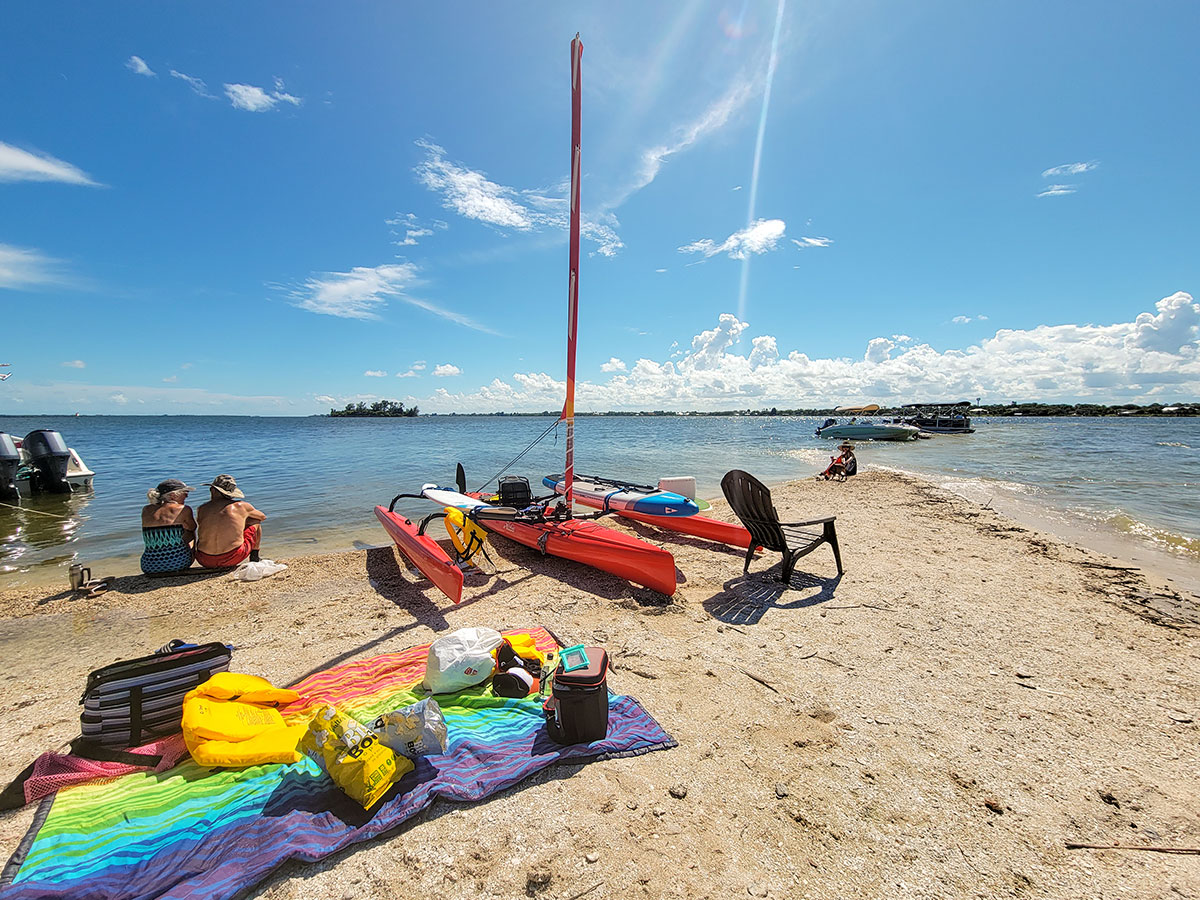
Visitors take a break while traveling along the scenic Indian River Lagoon Estuary where it is important to be aware of shallow water when approaching spoil islands. DAN SMITH
Protected lagoon islands provide respites for boaters and wildlife
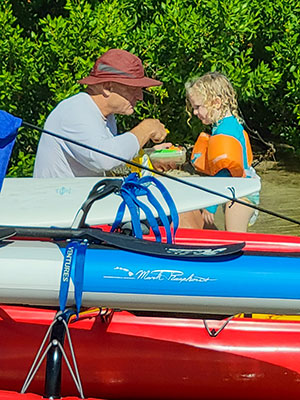
Smith and his granddaughter share a snack during a family outing to one of the islands. DAN SMITH
Whether you are looking to connect with nature and wildlife — or seek solace while camping under the stars — the Indian River Lagoon’s spoil islands offer a picture perfect setting for all that is related to nature.
The man-made sanctuaries that dot the inland waterways from Mims to Sebastian Inlet are havens for tranquility — and provide a peaceful place for both recreation and wildlife conservation.
Created as a byproduct of channel dredging along the inshore coastal waters back in the late ’50s and early ’60s, the spoil material was originally deposited in piles along the edge of the land. Over time, many of the piles of rock, shells and sand eventually spread to the middle of the lagoon, forming islands that became vegetated, as seeds and plants drifted onto them.
Ownership of the spoil islands varies, from the state, to federal agencies and even a few private individuals.
Part of seven aquatic preserves, which are found from Volusia County to Palm Beach County, they are managed by Florida Department of Environmental Protection’s Indian River Lagoon Aquatic Preserves Office. The recreation islands are overseen as part of the Spoil Islands Enhancement Project. Headed by IRLAP, with help from partners and volunteer organizations, the project provides recreational opportunities on many of the islands throughout Florida’s Treasure and Space coasts while also protecting the islands’ ecology.
VOLUNTEERS DO UPKEEP
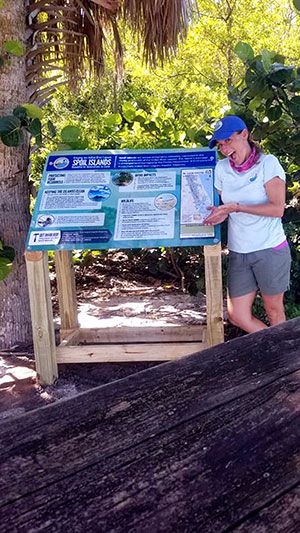
Emily Surmont, an Indian River Lagoon Aquatic Preserves staff member, checks out educational signage that provides maps and information. IRLAP
Friends of the Spoil Islands, a nonprofit Citizen Support Organization established in 2014, assists IRLAP with the maintenance of the islands designated as recreational.
According to John Bacon, FOSI president, funding comes from grants, fundraisers and private and public interest donations.
“The Florida Legislative provides that the DEP may approve Citizen Support Organizations that act consistent with the goals of this department in the best interest of the state,” Bacon said. “It is very important to have areas for recreation allowing both humans and animals to co-exist. As a CSO, we are able to assist with many projects that ultimately allow better stewardship for these aquatic preserves.”
Though many spoil islands might be identified by residents with names ranging from Dolphin Island to Horseshoe Crab Island, they are listed on IRLAPs maps according to alphabetical and numerical or longitudinal descriptions. For example, BC denotes Brevard County; PB, Palm Beach County; etc.
As part of a mission to provide upkeep and maintenance, as well as protect the ecological integrity of the Indian River Lagoon, the Spoil Islands Enhancement Project and the Leave No Trace projects were adopted to ensure the continuation of the aquatic preserves natural conditions.
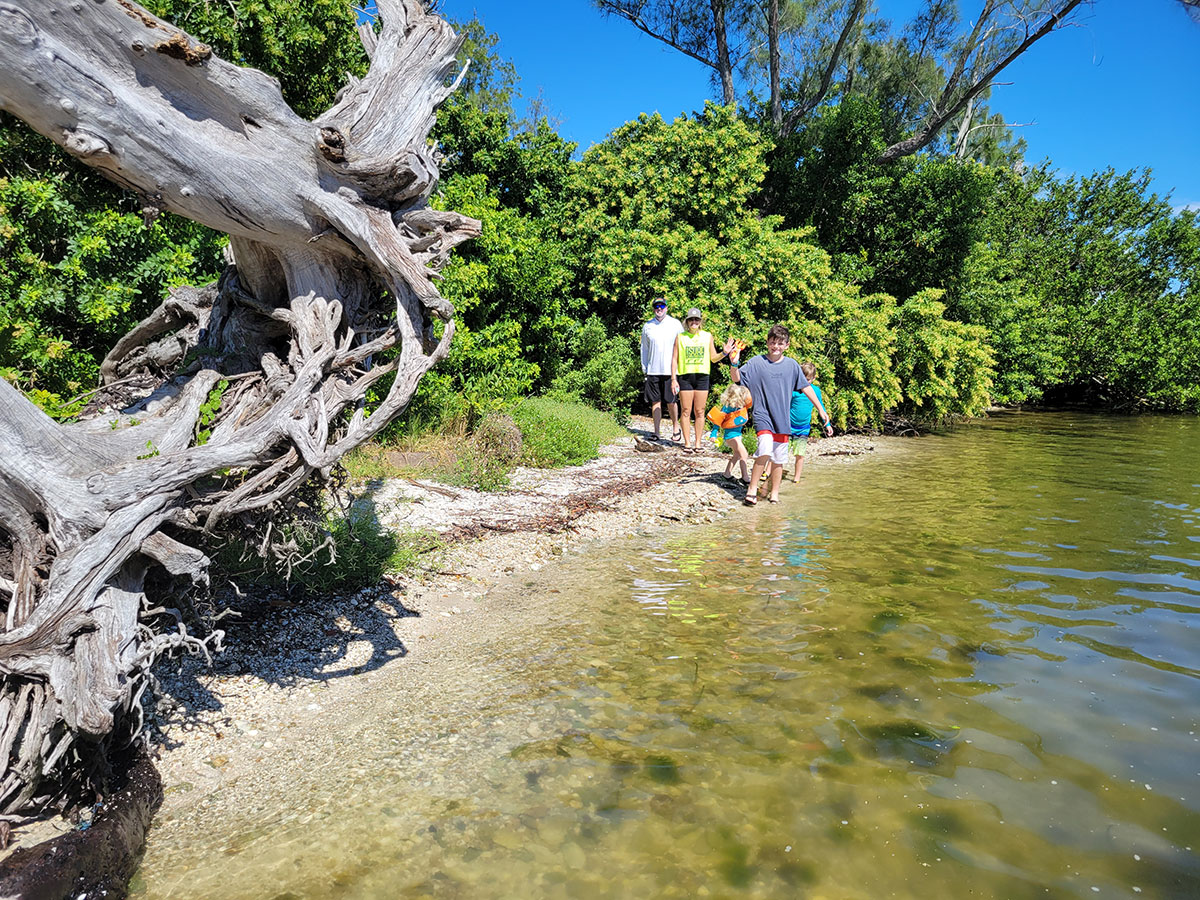
Danny Smith and his family visit Grant Island, one of the larger spoil islands at the southern part of the county that
can be accessed via kayaks or paddle boards. DAN SMITH
SOME ISLANDS ARE OFF LIMITS
Conservation islands serve as important ecological resources and nesting or foraging grounds for hundreds of wildlife species. According to the Florida Department of Natural Resources, more than 467 species of animals and plants occupy the conservation islands that house many of the states’ most important bird rookeries.
People are prohibited from visiting islands that are marked on a county’s interactive map with a red exclamation mark and blue signage visible from the waterway.
According to Irene Arpayoglou, IRLAP manager, the maps provided include all islands that are accessible, as well as those that are Critical Wildlife Areas.
“The BC49 spoil island [noted in purple on the maps] is closed from January through August, as this is an important bird and wildlife rookery,” she explained.
“It is important that humans and dogs do not visit this island, as any disturbance to nesting birds may cause them to abandon their nests. It is our goal to continue to monitor these islands throughout our aquatic preserves jurisdiction, and fines will be imposed for those who violate the signage rules that are posted on these CWA sites.”
The recreation islands are marked on interactive maps with a green tree symbol and are designated for both camping and picnicking. Many have picnic tables, fire pits and grills. However, because there are no trash cans, visitors are required to remove any trash they create. The recreation islands do not have potable water or restrooms, and it is important that visitors be vigilant when disposing of human and pet waste. Information on Leave No Trace can be found on the FOSI website.
“It is imperative that all visitors do their part and help ensure a sustainable, healthy, safe and enjoyable experience,” Bacon said.
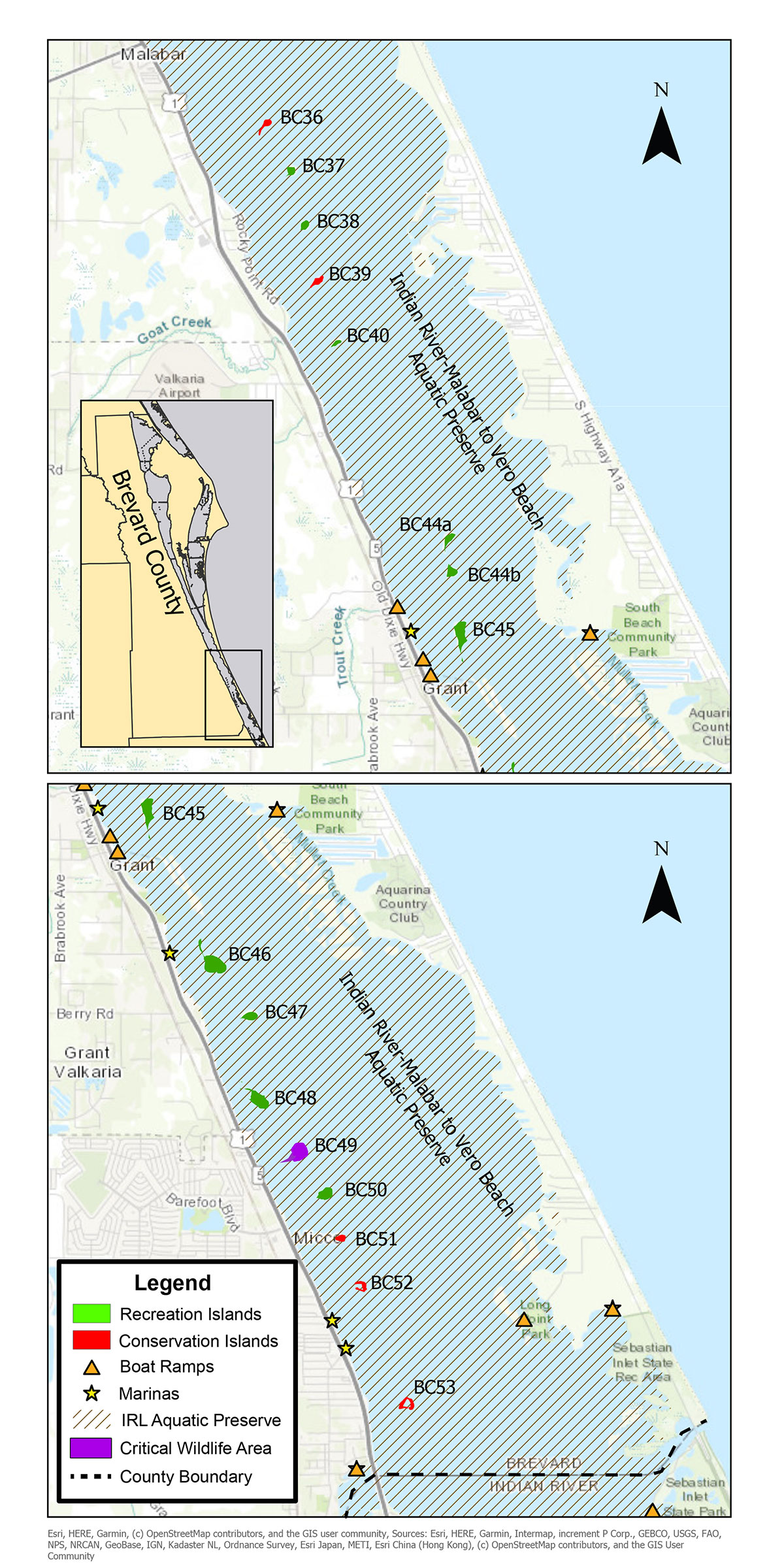
Spoil island maps are available via the IRLAP website. The detailed information shown denotes critical wildlife islands and recreational use sites. IRLAP, FOSI MAPS
ACCESS AVAILABLE FOR DISABLED
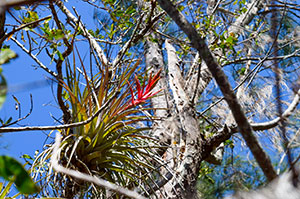
An airplant.
In 2016, FOSI received a $25,000 grant from the Indian River Lagoon National Estuary Program to outfit two campsites in St. Lucie County as part of an initiative to increase access for visitors who are physically disabled. FOSI volunteers installed AccessRec mats, a beach wheelchair, picnic tables and fire pits designed to accommodate the needs of disabled visitors. Future plans include securing funds for a dock to be built on these sites.
Bacon said he hopes funding will continue to facilitate similar projects within the boundaries of other aquatic preserves in Brevard and beyond, as part of the Spoil Island Project.
“I truly enjoy being involved in maintaining the spoil islands and cutting trails, assisting in removal of excess brush cuttings and working with multiple volunteers that do everything from repairing picnic tables, to spraying for evasive poisonous foliage on the islands.”
One of the best ways for citizens to support the recreation islands is to become an island adopter.
The free Adopt-a-Spoil Island program involves a one-year commitment that includes at least one cleanup each quarter. The adopters are invited to help enhancement projects such as picnic table installations, campsite maintenance and trail cleaning. Whether individuals, families, or even business associates, these tasks not only connect volunteers with nature, but offer many learning experiences and knowledge relating to the ecosystem science. Information on signing up for these duties can be found on the FOSI website.
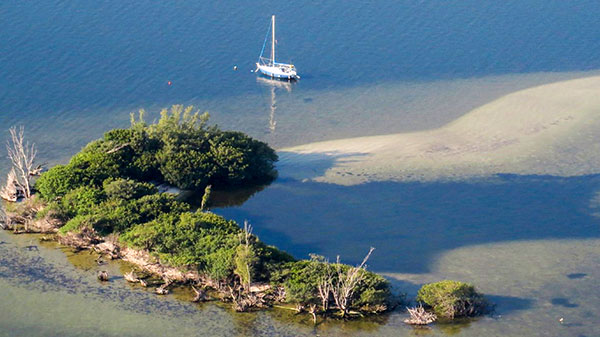
People who would like to support the recreation islands can adopt an island like this one in Brevard County’s Indian River Lagoon. IRLAP
Access to all of the islands can be had via power boat, sail boats, kayaks or canoes. And many local excursion operators offer day trips, or even overnight camping, to several locations throughout the area.
Maps are provided online and can be downloaded and printed. IRLAP is in the process of designing an app that will include both latitude and longitude sites for each of the spoil islands with information on specific amenities.
Camping reservations are not necessary since sites are available on a first-come, first-serve basis.
FOSI suggests visitors plan ahead with regard to weather situations and availability because sites are more popular on weekends and holidays.
Visit www.fosifl.org for more information about maps, access and other features pertaining to the spoil islands and the aquatic preserves in Brevard.

Sue DeWerff Panzarino
Sue is an avid surfer, shark attack survivor and storyteller who loves to write about the wonderful people and great organizations on the Space Coast.




